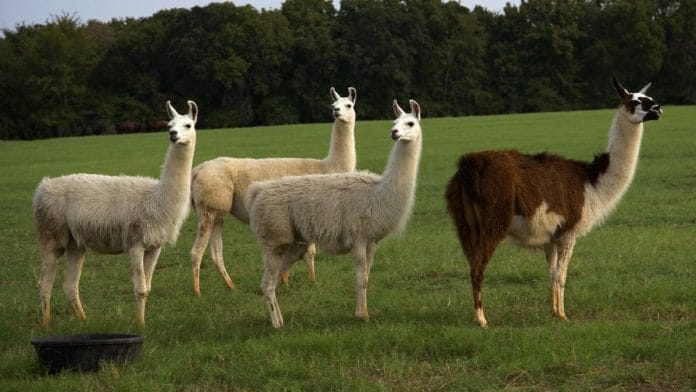New Delhi: A surprising new development in immunity against HIV is the discovery of llama nanobodies that can identify and neutralise various strains of the HIV-1 virus. Published on 17 July in the Advance Science journal, the study was conducted by scientists from Georgia State University, who used antibody genes from llama DNA to come up with these nanobodies.
Nanobodies are basically parts of antibodies but are about one-tenth the size of an antibody, and are also more agile and effective in targeting certain viruses. HIV is one such virus in which traditional antibodies might not be as effective, but flexible nanobodies like the one derived from camels and llamas are more effective. In this study, the scientists stimulated the immune system of llamas to produce antibodies that have a neutralising effect and found that the derived nanobodies have a 96 percent success rate against HIV-1 strains. These nanobodies were also more effective in identifying the strains of HIV-1.
Now, future research can work to combine these llama nanobodies with other broadly neutralising antibodies that are commonly used in treatment to find any that can have a 100 percent success rate against HIV. Read more here.
Also read: Ice sheets in West Antarctica melting faster than in East, reason may lie in the origin story
Potential gene therapy for muscular dystrophy could slow muscle decline, repair them in future
A 17 July study published in Nature Journal looks at gene therapy treatments for Duchenne Muscular Dystrophy, a hereditary disorder that leads to muscle degeneration and weakness. Conducted by University of Washington School of Medicine scientists, this study targets the DMD gene in muscles that causes muscular dystrophy, and attempts to treat it via gene therapy.
One of the main problems with gene therapy for DMD is that the DMD gene is the largest gene in the body, and usually the adeno-associated vectors (AAVs) used for gene replacement do not have enough capacity required for the gene. Instead, the researchers used a series of AAVs to deliver the protein dystrophin to the gene, which is what the gene affected by DMD lacks.
In animal trials, they found that this therapy slowed down the muscle degeneration associated with the disease, while also reducing the existing effects of DMD in mice. The next stage of this study is human trials, but if successful this method could help not just muscular dystrophy but other gene-related disorders too. Read more here.
First ever model forecasts ‘rogue waves’ in oceans minutes in advance to help ships
On July 18, a research paper in Scientific Reports journal looked at how a new AI model has collected data on billions of sea waves to accurately predict when ‘rogue waves’ or ‘freak waves’ occur. These are waves that are much larger than the average wave size and pose a risk to ships, equipment and people onshore. However, the study explains that there has, as yet, not been a forecasting system for these rogue waves.
Researchers in the study utilised a dataset of wave records to train neural networks. These networks learned to identify patterns distinguishing waves that precede a rogue wave from those that do not. The approach enabled the prediction of three out of four rogue waves one minute in advance. When the prediction window was extended to five minutes, the accuracy decreased to predicting seven out of 10 waves correctly. However, these neural models can also forecast rogue waves in locations whose data was not fed to them. Therefore, they can extrapolate and can be used in different places. Further research is required to improve the forecasting system and the forecast period, said the study. However, since it is the first such study, it is a significant step towards this research. Read more here.
Sun already starting its new solar cycle, with old cycle not yet over
Sound waves from the sun indicate that it is beginning a new solar cycle soon, according to news published in the Royal Astronomical Society on 19 July. The research by scholars from the University of Birmingham was presented in the National Astronomy Meeting 2024 and relies on regular observation of data from internal sound waves of the sun.
A solar cycle is an 11-year period that the Sun undergoes during which its magnetic activity fluctuates, leading to increased visibility of sun spots, solar flares and also impact on the satellite and communication systems on Earth. Currently the 25th solar cycle is ongoing and is at its peak — known as solar maximum. This cycle began in 2019 and is expected to end in 2030. However, scholars from the University of Birmingham have shown that the sun’s sound waves right now are very similar to what was observed before the beginning of the 25th solar cycle, and they say that it is an indication that the 26th solar cycle is closely approaching.
While the 26th cycle won’t officially start before 2030, the current indication could be helpful for the study of solar cycles, which have been regularly tracked since 1955. It also allows for comparison with previous solar cycles and better prediction methods for future ones. Read more here.
Also read: The Penguin & the Egg — Webb telescope captures the ‘embrace’ of two galaxies






